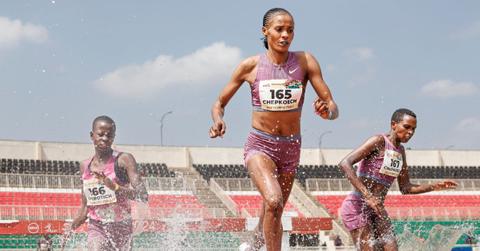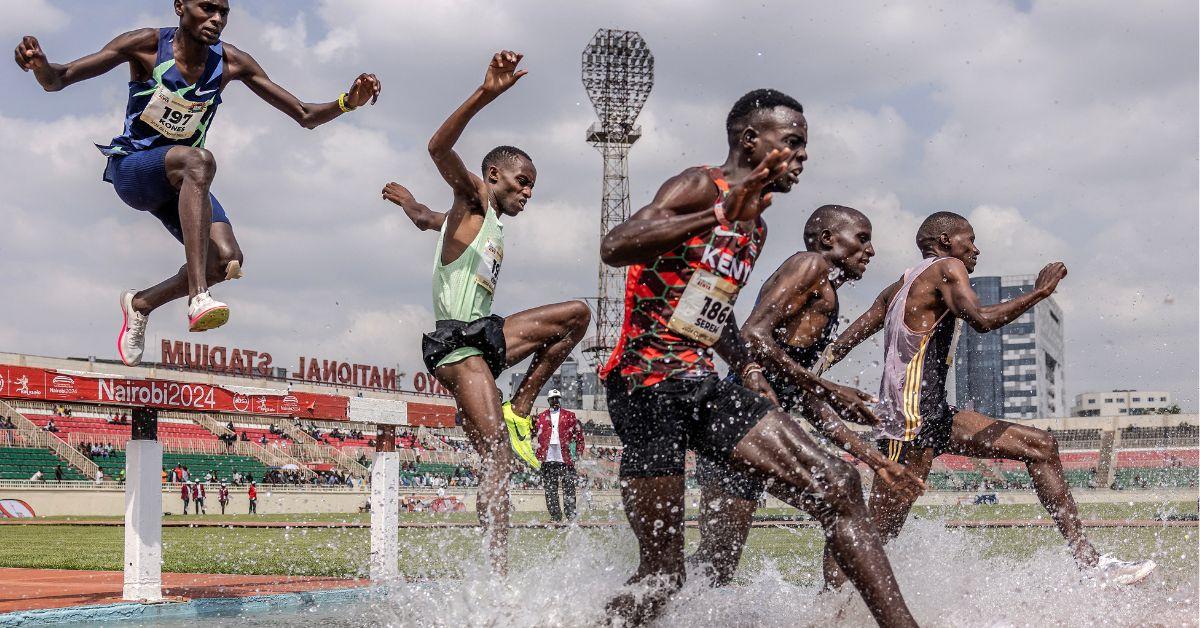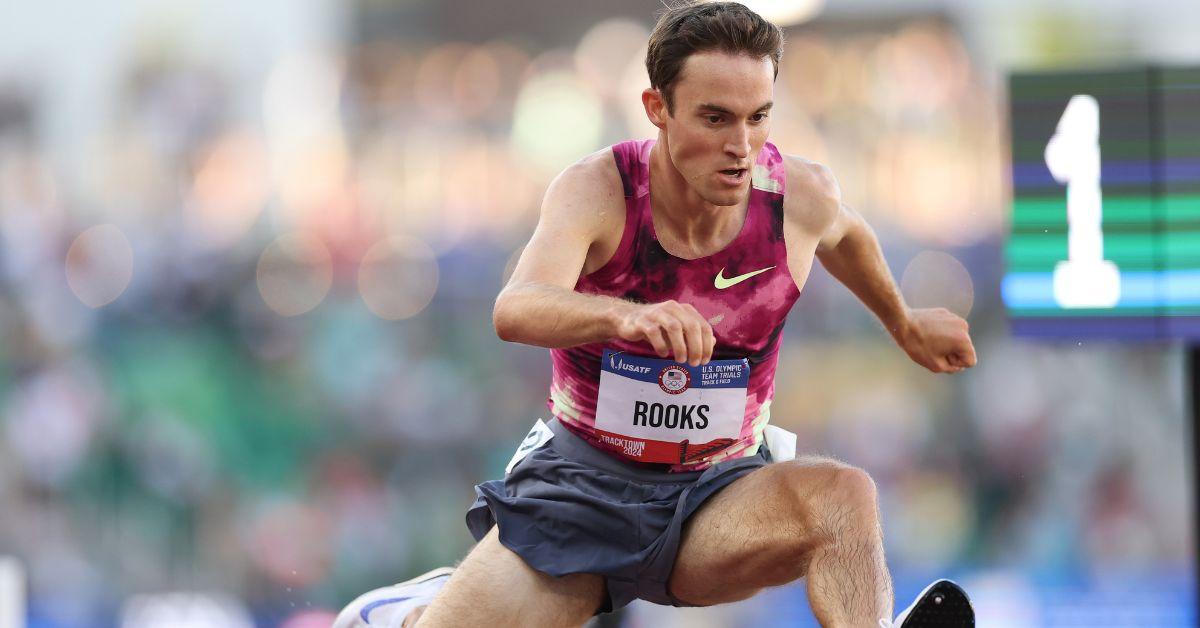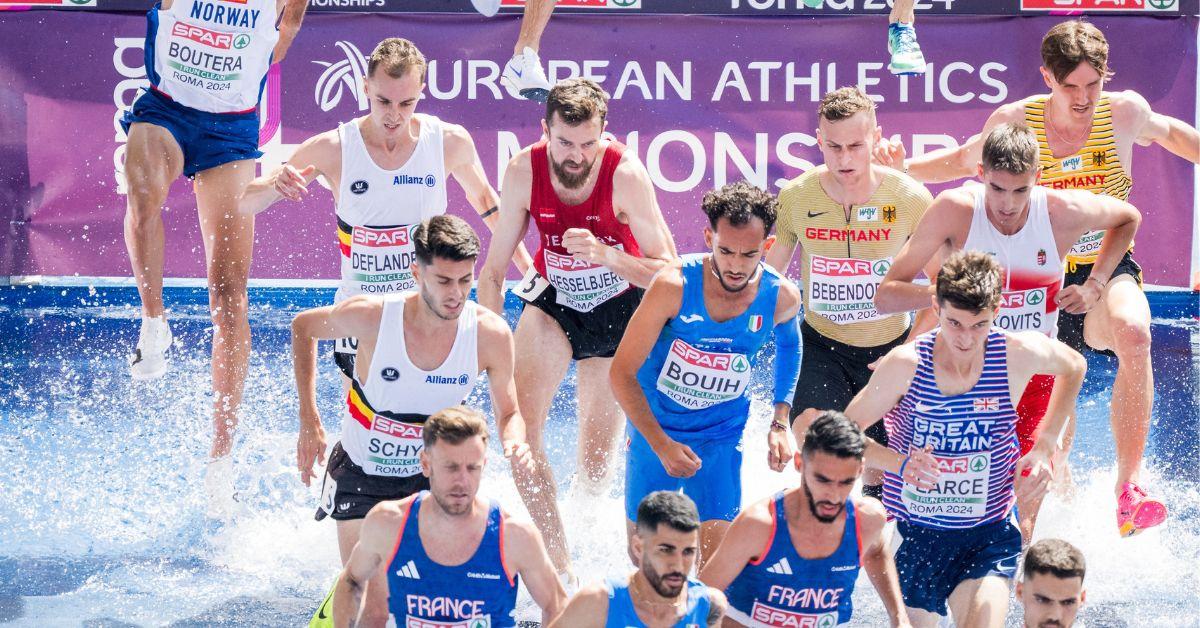Running a Steeplechase Gets Athletes a Bit Wet — What's the Deal With the Pit?
The mysterious steeplechase rattles fans every Olympics. Would you go running through the puddle to secure a gold medal?
Published June 29 2024, 3:20 p.m. ET

The Olympics takes average sports watchers and exposes them to a wide variety of new athletic competitions. In the world of track and field, the steeplechase event is particularly difficult.
When tuning in for the first time, fans might be surprised to see athletes running through water as part of a track challenge. Between the hurdles and the puddles, it's a lot to keep track of.

Why does the steeplechase have water?
The sport originated off-the-track and, instead, in a more cross-country style way. According to Business Insider, it started more as a game in the United Kingdom where runners raced through terrain.
Eventually, it was modernized first by Oxford University, according to the IAAF. As part of that modernization, it needed to be translated from rough and random terrain onto a standard track field. In order to do so, the modern 3,000-meter steeplechase track event used hurdles to mimic stone walls and the famous water was meant to replace rivers and streams.
It was adopted into the Olympics in 1920 for men and 2008 for women. The event is standardized now, ditching the randomness of the traditional state of the game.
There are four hurdles, not including a barrier before the water pit. Athletes need to make it through that 12 feet of water to complete the course which isn't very easy. It's not uncommon to see even the professionals totally wipe out.

Why is it called steeplechase?
The name dates back to its interesting origins as just a commoner's game. In the United Kingdom, people would race between towns rather than just at random. Back then, every town had one building they could bank on – a church.
They would set the church's steeple as the target, racing from one town's church to another. That's where the name "steeplechase" began as they were quite literally chasing a steeple.

Who is competing in the steeplechase for Team USA?
Unlike other sports, track events are limited to only a couple, or sometimes one, competitor. In the case of the steeplechase, three finalists for the women were selected: Valerie Constien, Courtney Wayment, and Marisa Howard.
The men's team was a fierce competition for 2024. However, the final results speak for themselves. The male athletes competing for Team USA are: Kenneth Rooks, Mathew Wilinkson, and James Corrigan.
Does steeplechase have horses?
There are two types of steeplechases — one for humans and one for horses. The steeplechase event for horseback riders is not included in the Olympics, but it is still certainly a competitive sport in and of itself.
It still has the same sort of origins as the track and field version with the only true difference being the horses themselves and, thus, some modified sizes for the hurdles and water pits.
Steeplechasing, for horses, falls under the category of "jump racing" or "National Hunt racing," which includes steeplechasing and hurdle jumping. The Grand National in Liverpool is considered to be the top competition for this event.